What to Plant Each Month in the UK: A Simple Guide
Embarking on a gardening journey in the UK can be an exciting adventure filled with fresh produce and vibrant blooms. Knowing what to plant each month helps you keep your garden thriving all year round. In January, prepare for the colder months by focusing on hardy vegetables like onions and garlic. As warmer weather approaches in April, you can turn your attention to a wider range of veggies, including carrots and peas.
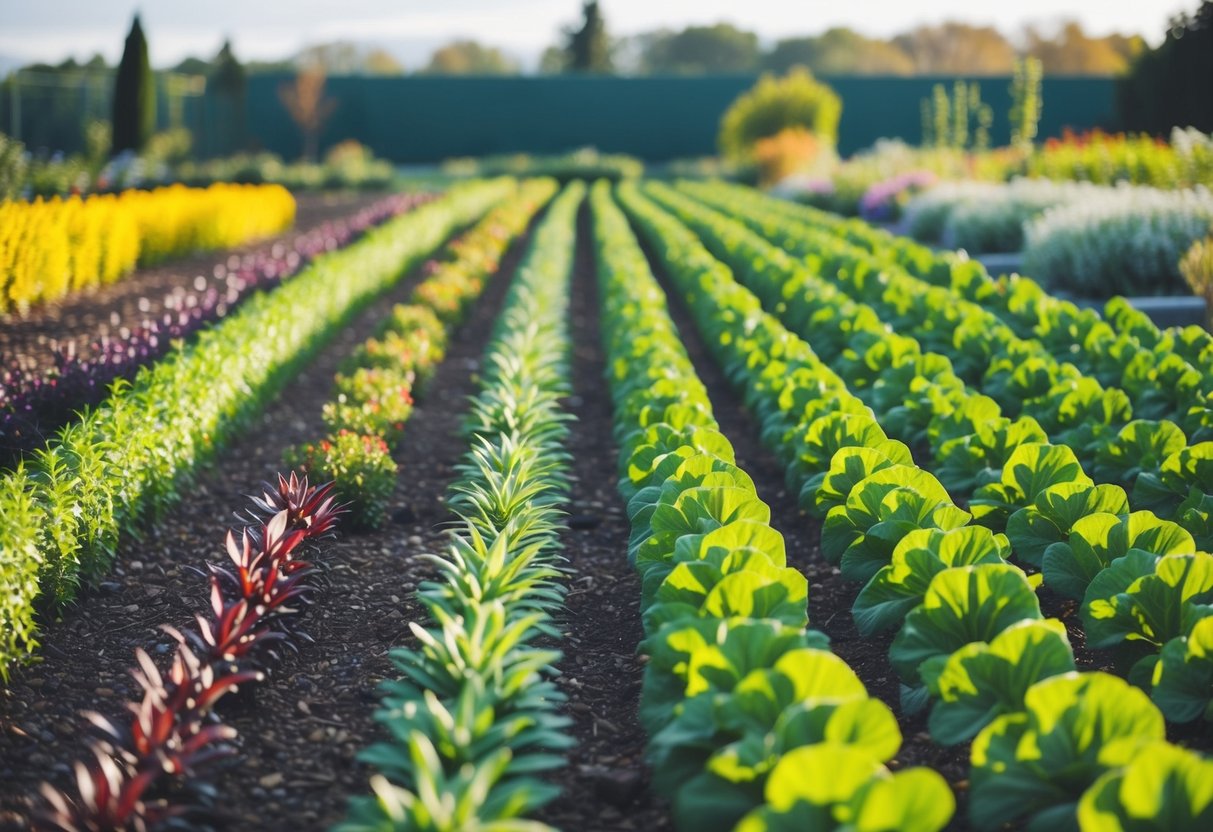
With a vegetable garden, each month brings its unique opportunities. During the summer, you can sow tomatoes and beans, which love the warmth. Use a planting calendar to guide your efforts, ensuring you’re sowing seeds at the ideal time. This strategy maximizes growth, ultimately leading to a bountiful harvest.
Having a vegetable planting guide in your toolkit keeps you organized and informed. This approach ensures that you can enjoy fresh, home-grown food throughout the year. Dive into each month’s possibilities and make your garden flourish, providing both beauty and sustenance no matter the season.
Getting Started with Your Vegetable Garden
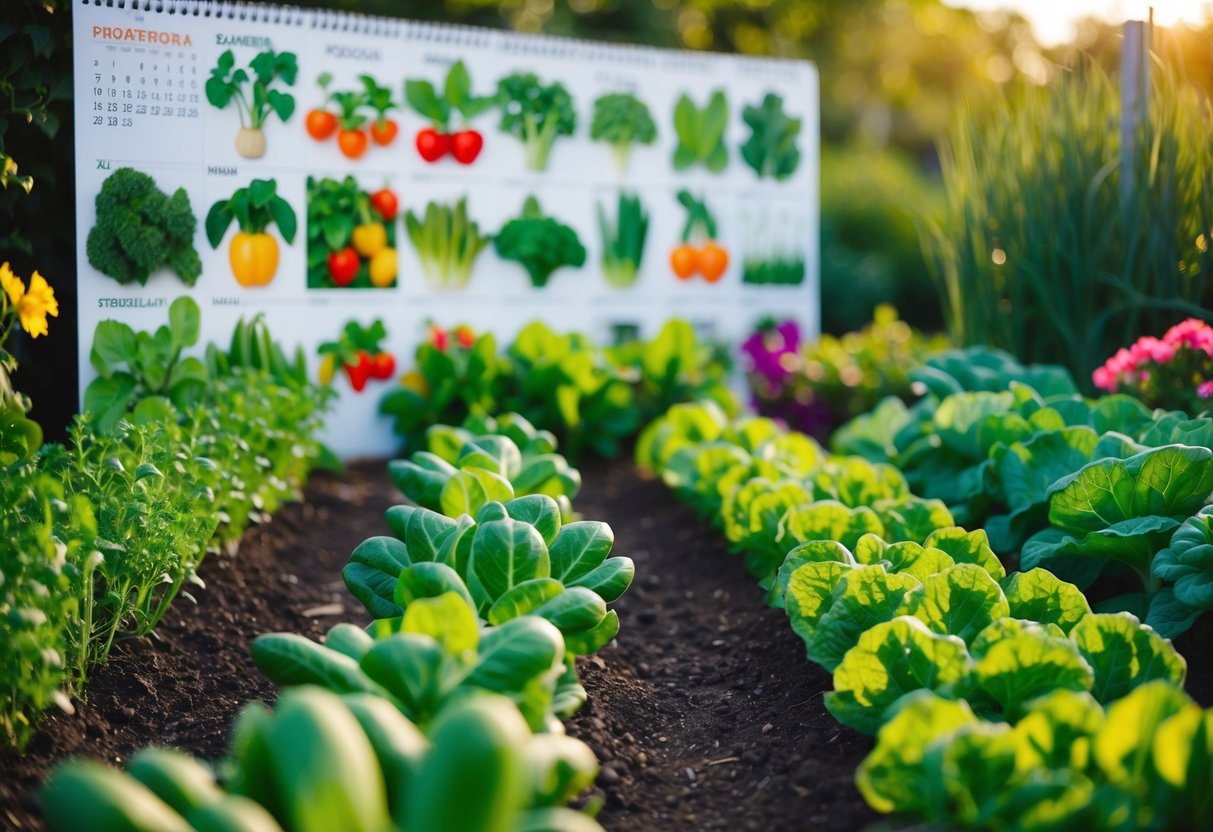
Beginning a vegetable garden can be a fun and rewarding project. By focusing on key areas like the planting calendar and understanding important planting factors, you can create a garden that thrives throughout the year.
Understanding The Planting Calendar
Knowing when to plant vegetables, fruits, and other crops is crucial. The UK has a varied climate, so using a planting calendar helps guide your efforts. Timing your planting to avoid frost can protect tender seedlings.
Winter: Plant garlic and broad beans now.
Spring: Focus on early crops like lettuces and peas.
Summer: Sow tomatoes in greenhouses or polytunnels for extended growth.
Using a calendar can help plan your growing season, so you reap a bountiful harvest.
Important Factors for Planting
When starting your garden, several elements can impact success. Soil quality and compost are essential. Compost can be a mix of nitrogen-rich and carbon-rich materials. Learn more about this from Country Living.
Consider companion planting to enhance growth and natural pest control. Crop rotation prevents soil depletion and reduces pests.
Remember to note the last frost date, as it’s important for protecting sensitive plants. A resource can guide you with specific planting and care tips to suit your garden climate.
By taking these factors into account, you set the stage for a productive and healthy vegetable garden.
Spring Planting: March to May

During the spring months of March through May, your garden will come to life with a variety of vegetables. This period is perfect for starting seeds indoors and preparing your garden beds. From early peas and radishes in March to the later planting of potatoes and carrots in May, spring offers many opportunities for a fruitful season.
March Delights
March is a great time to begin sowing seeds indoors. You can start with onions, lettuce, and brassicas like cabbage and broccoli. These veggies benefit from the early start so they’re ready to plant outdoors when the weather warms up.
Outdoors, consider planting peas and broad beans directly into the soil. If the ground is workable, you can also plant radishes. These are quick to mature, offering a fresh crunch to your spring salads. Adding organic matter like compost to your soil can improve its quality, helping seedlings grow stronger.
Don’t forget about spinach and early carrots. These can be sown outdoors if temperatures permit. March is your opportunity to jump-start the gardening season with abundant fresh greens and root veggies.
April Showers Bring May Flowers and More
April is the time to transition more delicate plants outside. Potatoes do well when planted early in the month. Use frost-protected trenches for best results. Indoors, continue sowing seeds for varieties like lettuce and brassicas.
As temperatures rise, this is perfect for sowing spinach and carrots directly into the ground. Similarly, radishes can be planted in succession for continual harvesting throughout late spring. Organic matter, if not added already, helps retain soil moisture during this pivotal time.
May allows for more diverse sowing, with beans and brassicas ready for larger spaces. Utilize all available areas to get the most from your garden. This ensures your garden provides fresh produce well into the summer months.
Summer Harvest: June to August
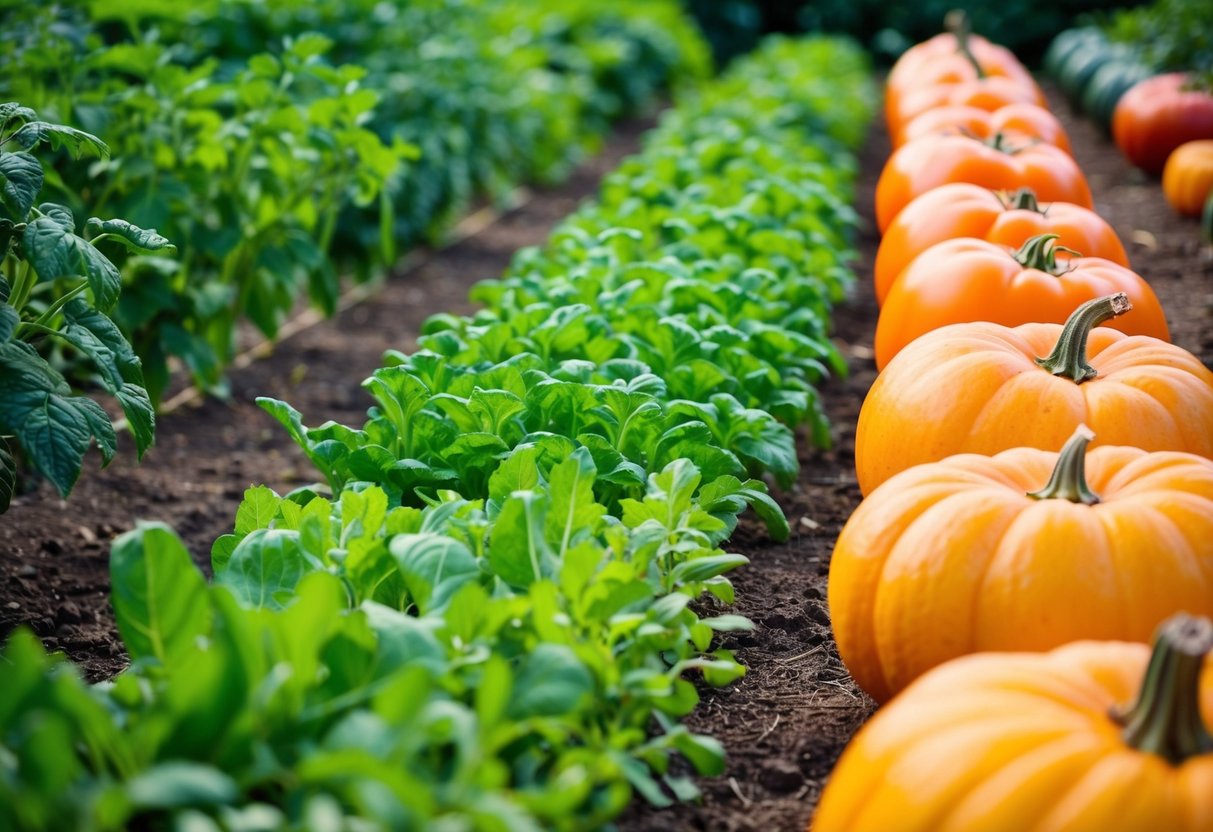
Summer is a vibrant time for gardening in the UK, with an abundance of crops ready to enjoy. In June, you can start harvesting early summer vegetables. July brings ripe tomatoes and cucumbers. By August, you prepare for autumn with plants like kale and cabbage.
High Sun and High Yields in June
June is a great month for harvesting early summer crops. You can enjoy fresh beetroots, which are usually ready by now. Check for small, tender roots. Courgettes are also a highlight, with their soft texture and mild taste. Pick them when they reach a size of around 10-15 cm to enjoy in various dishes.
Don’t forget about sweetcorn, which can also be harvested towards the end of the month. Look for yellow kernels and milky sap when you break them open. June is perfect for preparing the ground for planting autumn vegetables, like kale and cabbage, since the warm soil will help them establish roots.
The Bounty of July
July is the month when tomatoes and cucumbers are in full swing. Pick tomatoes as soon as they turn red, but let some ripen on the vine for the best flavor. You can enjoy them fresh or in salads.
Cucumbers are also abundant now. They should be firm and bright green. Harvest regularly to encourage more growth. Kale and cabbage are still growing strong, and while it’s not time to harvest them yet, July is perfect to monitor their progress and ensure they’re doing well.
For sweetcorn, this is the peak time to pick them, enjoying the tender, juicy cobs during barbecues. Remember, regular harvesting encourages continuous production.
Preparing for Autumn in August
August is when you start preparing for autumn. Harvesting continues with courgettes and cucumbers. Keep an eye on the weather, as it begins to change. This is crucial for timely harvesting. Beetroot is ready too; just pull them up when they’re about the size of a golf ball.
August is ideal for kale and cabbage. They’re strong and can withstand cooler temperatures. Prepare for planting winter varieties as the month ends. Harvesting now allows your garden to transition smoothly into the autumn months, ensuring a continuous supply of fresh produce.
Autumn Preparations: September to November
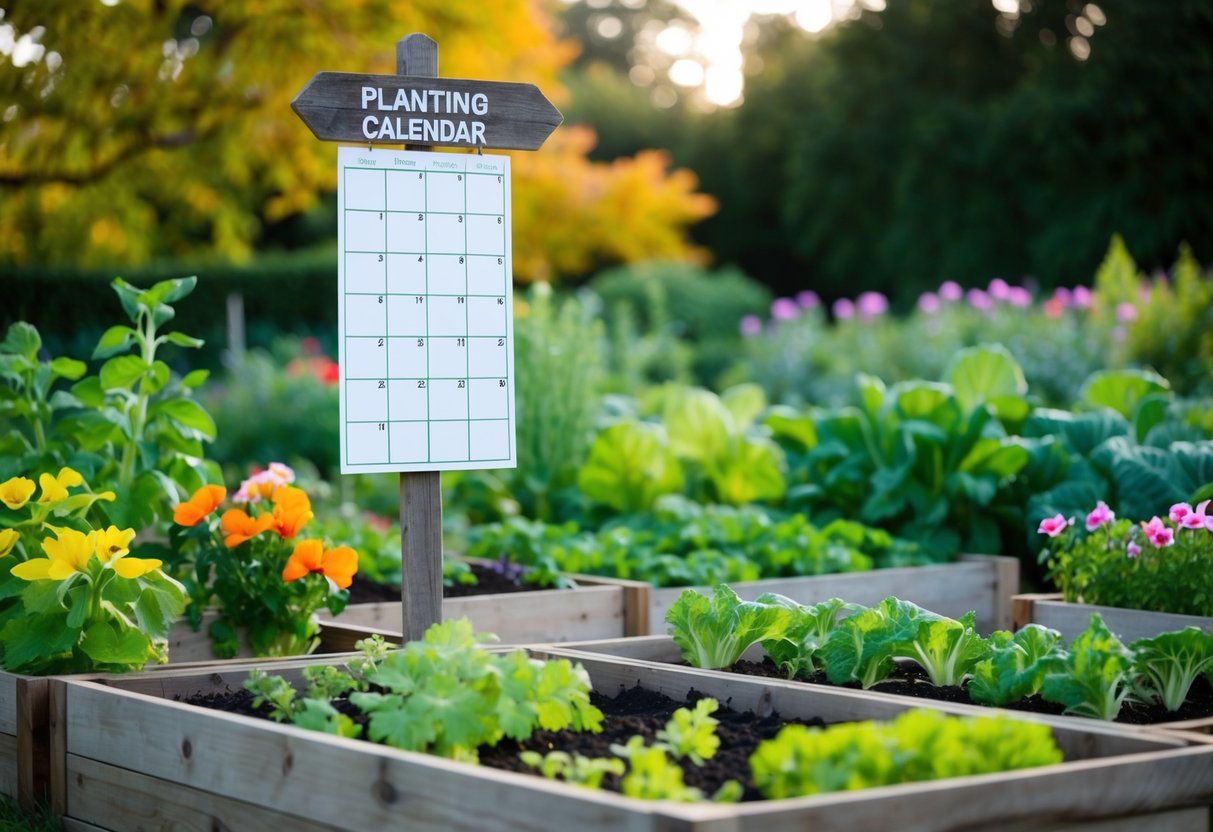
As autumn arrives, your garden needs care and attention to prepare for the colder months. Focus on planting hardy crops, nourishing the soil, and maintaining the beauty of your greens.
September’s Fading Light
With September’s arrival, the daylight begins to fade, giving you the chance to prepare for winter. It’s a great time to plant spring-flowering bulbs like daffodils and tulips. Adding these bulbs now ensures a vibrant display next spring.
Consider planting winter-hardy vegetables such as kale, leeks, and garlic. These plants withstand the chill, readying your garden for the colder days ahead. To improve soil health, apply well-rotted manure and compost, as it enriches the soil’s nutrients.
Raise your lawn mower’s cutting height to let your grass strengthen before winter sets in. Regularly clear fallen leaves and create leaf mould, a fantastic addition to your soil. Keep your garden tidy while also preparing the ground for better growth.
October’s Falling Leaves
October brings a burst of color with falling leaves all around. Use these leaves to make leaf mould. Leaf mould improves soil texture, helping plants retain moisture and nutrients.
You can plant hardy crops like swede and parsnips. These vegetables grow well in cooler temperatures and will be ready to harvest through winter. This is also a good time to plant broccoli and Brussels sprouts, which thrive in the chilly months.
Keep an eye on perennials as well, trimming them back appropriately and adding mulch as winter approaches. Adding mulch helps protect the roots from freezing. Mulch made from leaves, straw, or other organic materials works wonders.
November’s Frosty Breath
November often brings frost, signaling the need for winter protection. Cover young seedlings with cloches or fleece to shield them from the cold. Root vegetables like garlic can still be planted now. They are hardy and will reward you with a fragrant harvest later.
Check stored compost heaps and keep them covered to ensure they continue breaking down over winter. Turn the compost to aerate and speed up the process.
Consider using well-rotted manure to prepare beds for next year. Modify your watering routine as plants require less moisture, but don’t forget to check for dry spells. These simple steps keep your garden healthy and thriving as winter approaches.
Winter Gardening: December to February
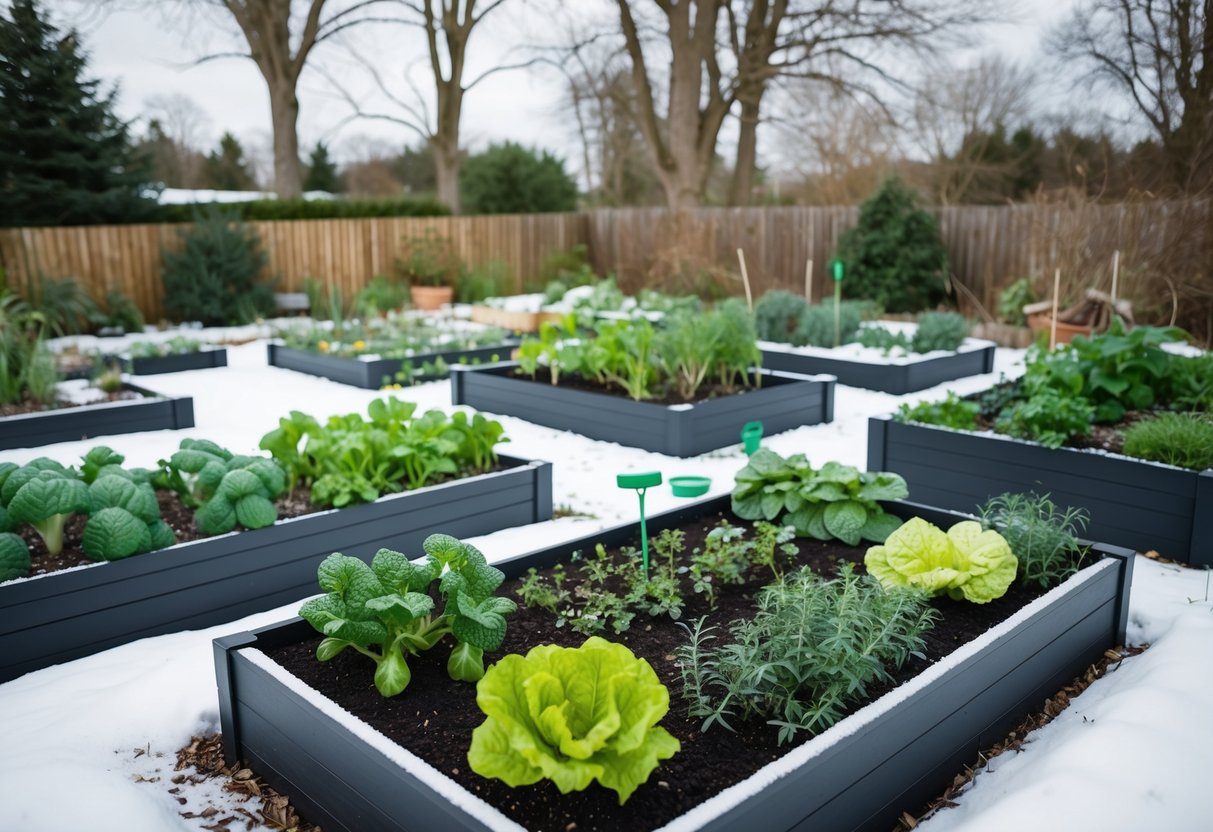
As the UK winter sets in, there are still opportunities for gardening from December to February. You can focus on protective measures and start new indoor plantings as the season progresses.
Cold December
In December, the chilly weather makes outdoor gardening a bit tougher. It’s a great time to plan for indoor sowing. You can start with chillies and aubergines because they need a longer growing season.
If you have a vegetable garden, consider planting perpetual spinach. It’s hardy and can withstand the colder temperatures. Use this month to tidy up your garden, removing dead plants and covering delicate ones with fleece or mulch. It’s also wise to regularly check your stored produce like potatoes to prevent spoilage.
New Beginnings in January
January marks the start of a new year in your garden. It’s a good time to focus on indoor sowing. Seedlings, such as onions and salad greens, can be started indoors.
Take some time to begin preparing your seed catalog and plan the year ahead. You might plant more winter-friendly plants like winter pansies. Check your stored seeds for viability, discarding any that are old or damaged. Keep your soil nourished by adding compost or other organic fertilizers to your vegetable beds.
Preparing for Spring in February
In February, start preparing your garden for spring. You can begin sowing early crops indoors like broad beans and early peas. These can be transplanted outside when the weather warms up.
Consider starting a seedling station with good lighting to encourage strong growth. It’s also a great time to prune fruit trees and bushes before they burst into bloom. Make sure your tools are clean and sharp, ready for the busy months ahead. Finally, February is ideal for checking on compost bins and turning them to boost decomposition.







